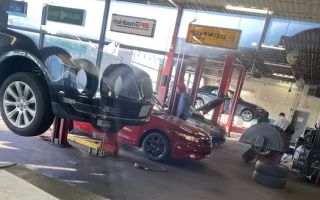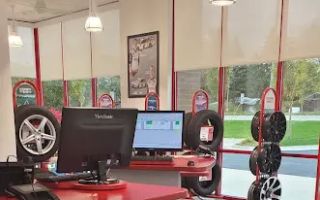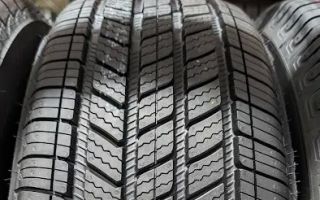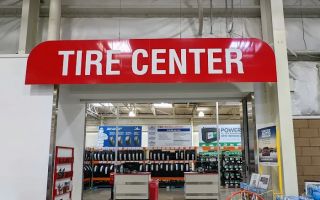What to Do When Your Car Air Conditioning Stops Working
We've all been there: It's a hot, sunny day, and as you start your car, you realize that the air conditioning isn't working. You press the button, adjust the temperature, and still nothing happens. The warm air keeps blowing, and you're left wondering what went wrong with your AC system. If you're anything like me, you might start feeling frustrated and a little panicked. But don't worry! There are a few simple steps you can take to troubleshoot and fix a car air conditioning problem.

Pick Your Part - Help Yourself
1232 Blinn Ave, Wilmington, CA 90744, USA
1. Check the Power and Settings
Before diving into complex repairs, it's a good idea to first make sure the issue isn't as simple as a user error. I’ve found myself in this situation more than once, so trust me when I say it’s worth double-checking the basics.

Pick Your Part - Greer
13054 E Wade Hampton Blvd, Greer, SC 29651, USA
1.1. Verify the AC is Turned On
Sometimes, we forget to turn the air conditioning on, especially when we're in a rush or distracted. Make sure the AC is actually activated. In some cars, it’s easy to confuse the climate control settings, and what you think is the AC might just be the fan or the heater. Ensure that the fan is set to the appropriate speed and the AC is turned on.
1.2. Set the Temperature Correctly
If the temperature is set to the highest level or the lowest, the air conditioning might not be able to regulate properly. Adjust it to a comfortable mid-range temperature and see if that helps.
1.3. Check for Blown Fuses
If you’ve confirmed the AC is on but still no cold air is coming through, there could be an issue with the fuse. A blown fuse can prevent the compressor or other critical components of the AC system from functioning. Check your car's fuse box for any blown fuses and replace them if needed.
2. Inspect for Refrigerant Leaks
If the AC power and settings all seem to be working correctly, the next culprit might be low refrigerant levels. I’ve had my AC fail due to refrigerant leaks before, and it can be a tricky issue to detect on your own. Refrigerant is the substance that helps cool the air inside your car, and if it’s leaking, your AC won’t be able to cool properly.
2.1. Look for Visible Leaks
Start by visually inspecting the AC lines for any signs of oil or refrigerant leaks. Sometimes, the connections between the compressor and the lines can wear down over time. If you see any oily residue or wet spots, that could be a sign that your refrigerant is leaking. In that case, a professional repair might be required.
2.2. Listen for Hissing Sounds
If you hear a hissing sound when the AC is on, it could indicate a refrigerant leak. This is a sign that air is escaping through a small hole or crack in the AC system. If you suspect a leak, it's best to have a mechanic diagnose and repair it, as they can use special equipment to find and seal the leak.
3. Check the AC Compressor
The compressor is the heart of your car’s air conditioning system. If it’s not working, your AC will fail to cool the air. I had a frustrating experience where I thought my AC was broken completely, only to find out the compressor had failed. If your compressor is malfunctioning, it’s essential to address it as soon as possible.
3.1. Check for Visible Damage
Look under the hood for the AC compressor. You might see a large pulley connected to a belt. The compressor should engage and turn when the AC is on. If you see that the compressor is not turning, it could be a sign of an issue with the clutch or the compressor itself.
3.2. Listen for Unusual Noises
When the compressor is running, it should be relatively quiet. If you hear grinding or squealing sounds, it could be an indication that the compressor is failing and needs to be replaced. A malfunctioning compressor often requires professional repair or replacement.
4. Clean the AC Condenser and Evaporator Coils
If your AC is blowing warm air, there could be an issue with the condenser or evaporator coils. Over time, dirt, debris, or even a small leak can cause the coils to malfunction. I’ve had to clean the coils of my car’s AC system before to get it working properly again.
4.1. Inspect the Condenser for Obstructions
The condenser is located at the front of the vehicle and works to release heat from the refrigerant. If it's blocked by dirt, leaves, or other debris, it won’t be able to release heat effectively, causing your AC to blow warm air. Use a soft brush or compressed air to clean the condenser and remove any blockages.
4.2. Clean the Evaporator Coils
Evaporator coils are responsible for cooling the air in your vehicle. Over time, dirt and dust can accumulate on the coils, preventing them from functioning efficiently. Cleaning the evaporator coils can improve air circulation and cooling performance. However, this is a delicate task, and if you’re unsure, it’s best to have a professional take care of it for you.
5. When to Call a Professional
If you’ve tried all the troubleshooting steps above and your car’s air conditioning is still not working, it might be time to call in a professional. AC systems are complex, and sometimes it’s best to leave repairs to an expert who can diagnose and fix the issue accurately.
5.1. Seek Professional Repair Services
Professional mechanics have the right tools and knowledge to deal with more complex AC issues, such as compressor failure, refrigerant leaks, or electrical problems. A reliable auto repair shop or a towing service like Rescue & Towing can help you get your car's AC back to normal. It’s always best to get a second opinion if you're unsure about the severity of the problem.
Remember, driving without a working AC during the summer months can be unbearable. If you find yourself in need of a quick and reliable fix, don’t hesitate to reach out to a local expert or towing service to help you get back on the road comfortably.




























